Export Office: 21Floor, No.5 Nanhai Zhi Road,Qingdao, Shandong ,China
Work Shop: Beian Industrial zone, Qingdao,Shandong,China
+86 532 88550858
Martin
Inquiry now
--By Qingdao Fluido Industrial Co., Ltd
- what is a pipe expansion joint
- why should I use a pipeline expansion joint
II. Function of Rubber Expansion Joints
- Absorbing movement and vibrations in piping systems
- Compensating for thermal expansion and contraction
- Reducing noise and shock in pipelines
III. Rubber Expansion Joints Types
- Single sphere rubber expansion joints
- Double sphere rubber expansion joints
- Threaded rubber expansion joints
IV. Structure of the rubber expansion joints
-Rubber body
-Reinforcing material
-Flanges
V. Applications of Rubber Expansion Joints
- HVAC systems
- Water and sewage treatment plants
- Chemical and petrochemical industries
- Power plants
- Pulp and paper mills
VI. Benefits of Rubber Expansion Joints
- Increased longevity of piping systems
- Reduced maintenance costs
- Improved system performance
- Enhanced safety for workers
VII. Installation and Maintenance of Rubber Expansion Joints
- Proper installation techniques
- Regular inspection and maintenance practices
- Recap of the importance and benefits of rubber expansion joints
- Emphasis on the role they play in maintaining the integrity of piping systems.
I. Introduction
l what is a pipe expansion joint
A pipe expansion joint is a flexible component installed in pipelines to absorb thermal expansion or contraction, vibration, and movement in the system. It allows for the movement of the pipe to avoid causing damage to the system or surrounding structures. Some expansion joints are made from rubber material, called flexible rubber expansion joints.
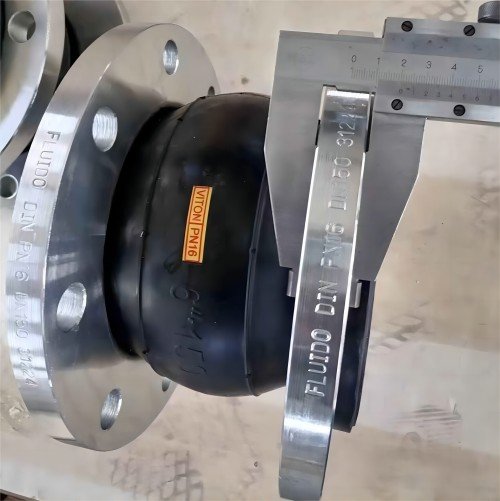
l why should I use a pipeline expansion joint
In a pipeline, it may cause noise, vibration or movement due to thermal expansion and contraction. Using a pipeline expansion joint can prevent vibration or movement damage to the pipeline system. Without a pipeline expansion joint, the pipe may experience stress, strain, and potential failure, leading to leaks or ruptures.
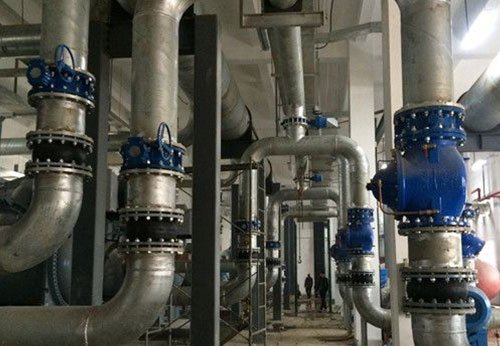
II. Function of Flexible Rubber Expansion Joints
l Absorbing movement and vibrations in piping systems
Because of the elastic properties of the rubber, and the constituent structure of the rubber part of the rubber expansion joints, they can absorb movement in piping systems caused by vibration. They help to reduce stress on equipment and piping, prevent damage to the system, and extend the lifespan of components.
l Compensating for thermal expansion and contraction
They are designed to allow for movement caused by temperature changes, preventing damage or failure due to stress. By providing flexibility and accommodating movement, expansion joints help to maintain the integrity and longevity of a structure.
l Reducing noise and shock in pipelines
Rubber expansion joints also help to reduce noise and shock, improve system performance, reduce noise pollution and provide flexibility for maintenance and repair.
III. Types of Rubber Expansion Joints
l Single-sphere rubber expansion joints
Single-sphere rubber expansion joints are designed with a single spherical rubber element that allows for movement in multiple directions to accommodate thermal expansion, vibration, and misalignment in piping systems.
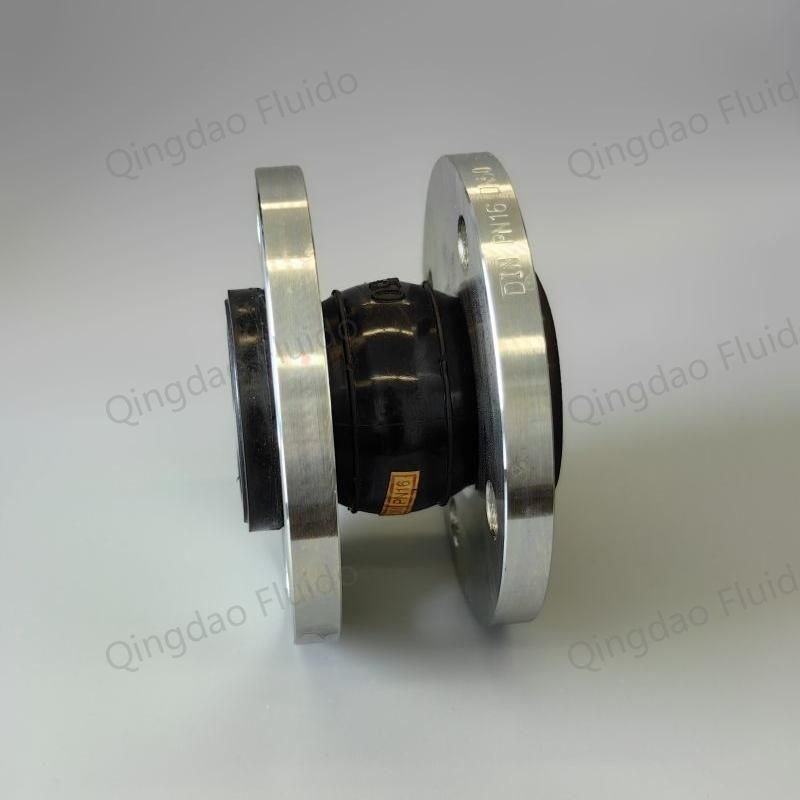
l Double sphere rubber expansion joints
Double-sphere rubber expansion joints feature two spherical rubber elements connected by a central sleeve, providing increased flexibility and movement capability compared to single-sphere joints. They are often used in applications where greater movement and flexibility are required.
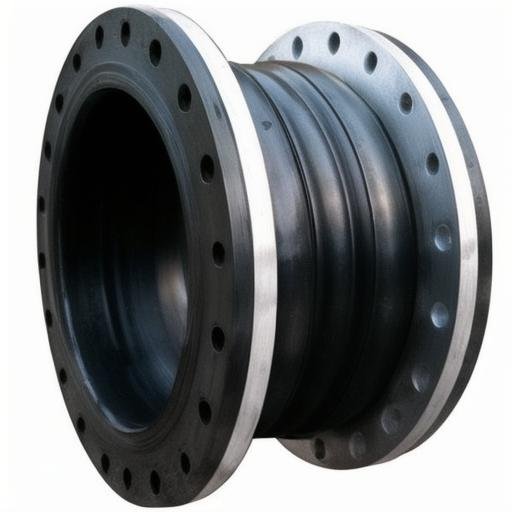
l Threaded rubber expansion joints
Threaded rubber expansion joints are designed with threaded ends for easy installation and connection to piping systems. They offer the same flexibility and movement capabilities as other types of rubber expansion joints but with the added convenience of threaded connections.
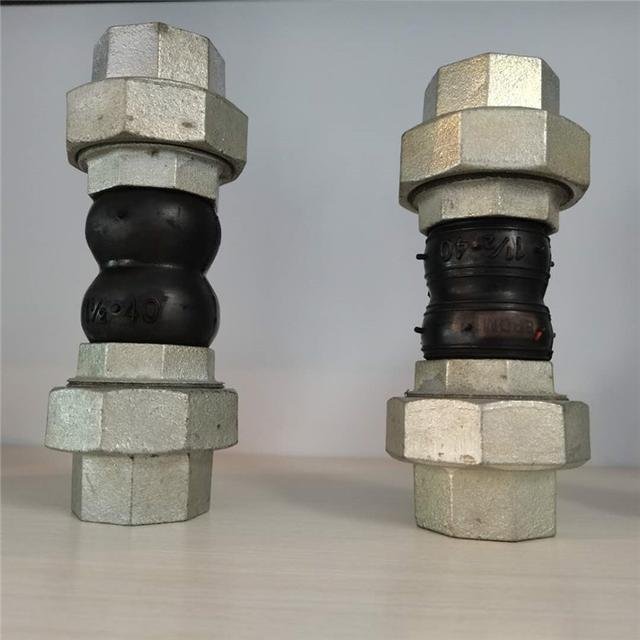
IV. Structure of the rubber expansion joints
Rubber expansion joints are made up of several components that work together to allow for movement and flexibility in piping systems. The basic structure of a rubber expansion joint includes:
l Rubber body: The main component of the expansion joint is the rubber body, which is typically made of NBR,SBR, EPDM etc., The rubber body is designed to be flexible and able to absorb movements and vibrations in the piping system.
l Reinforcing material: Part of the rubber body, often made from layers of fabric, nylon, or metal mesh. This helps to prevent the rubber from tearing or failing under pressure, to provide strength and durability to the rubber body.
l Flanges: For easy installation, rubber expansion joints normally come with two flanges on each end, to connect the expansion joint to the piping system. The flanges are typically made of steel and can fit with standard pipe flanges.
V. Applications of Rubber Expansion Joints
l HVAC systems
l Water and sewage treatment plants
l Chemical and petrochemical industries
l Pulp and paper mills
VI. Benefits of Rubber Expansion Joints
l Increased longevity of piping systems
l Reduced maintenance costs
l Improved system performance
VII. Installation and Maintenance of Rubber Expansion Joints
l Proper installation techniques
1. During the construction and installation of flexible rubber joint pipes, it must be in a natural state. Do not make the product deform artificially during the installation and strictly prohibit the super displacement limit.
2. If you install the joint at the near end of the outlet of the pump or the corner of the pipe, and when using the product with high pressure and high-rise buildings, the pipe must have fixed support, and the force of the fixed support must be greater than the axial force.
3. when the flange rubber joint is installed, all the reinforcing rings at both ends of the sphere shall be stuck into the flange groove to prevent the sphere from falling from the flange when the pipe is under pressure.
4. When the rubber joint is connected with the pipe flange, the bolt rod should face to the pipe end. When the thread is compressed for expansion to avoid the extrusion or injury of the arch of the rubber joint. And the bolts at each end must be pressurized and tightened symmetrically to make all the bolts tighten consistently. When use places with bad conditions. In addition to adding the flat cushion, the spring washer should also be added to prevent loose nuts.
5. When the rubber joint is used in the condition of close pump outlet or frequent opening and stop, in order to reduce the impact of the stretching and compression of the rubber joint length, the limit device should be added at both ends of the flange.
6. When installing and using a large diameter flexible rubber joint,make a short pipe of appropriate length at one end of the flange. After the rubber joint is connected with the short pipe then weld the other end of short pipe with the long pipe.
7. In order to avoid the radial deviation caused by the welding deformation of the short pipe, the flanges of the pipe should be temporarily welded before welding, so that the rubber joint and flange form a rigid body. After the completion of the short pipe welding, the welding of the short pipe should be removed, so that the rubber joint is in a natural state after the installation.
8. While welding, remember not to cover the rubber joint at the welding place with something, so as not to burn out the ball when welding.
l Regular inspection and maintenance practices
1. Inspect the expansion joint for signs of wear, damage, or deterioration on a regular basis.
2. Checking for any leaks or gaps around the expansion joint that could indicate a problem.
3. Cleaning the expansion joint periodically to remove any buildup of dirt, debris, or other contaminants.
4. Replacing the expansion joint if it shows signs of significant wear or damage that could affect its performance.
5. Monitoring the performance of the expansion joint over time to ensure it is functioning properly and providing the necessary flexibility and movement for the system.
VIII. Conclusion
Rubber expansion joints can reduce noise and vibration, preventing leaks, help prevent damage to pipelines, equipment, and structural supports, to improve overall system performance. They are cost-effective solutions that can be easily installed and maintained, making them an essential part of any piping system.
If you need more information or need to buy rubber expansion joints, please contact:info@eathu.com
Export Office: 21Floor, No.5 Nanhai Zhi Road,Qingdao, Shandong ,China
Work Shop: Beian Industrial zone, Qingdao,Shandong,China
+86 532 88550858
Martin
© 2020 Qingdao Fluido Industrial Co.,Ltd. All Rights Reserved. Qingdao fluido valve

